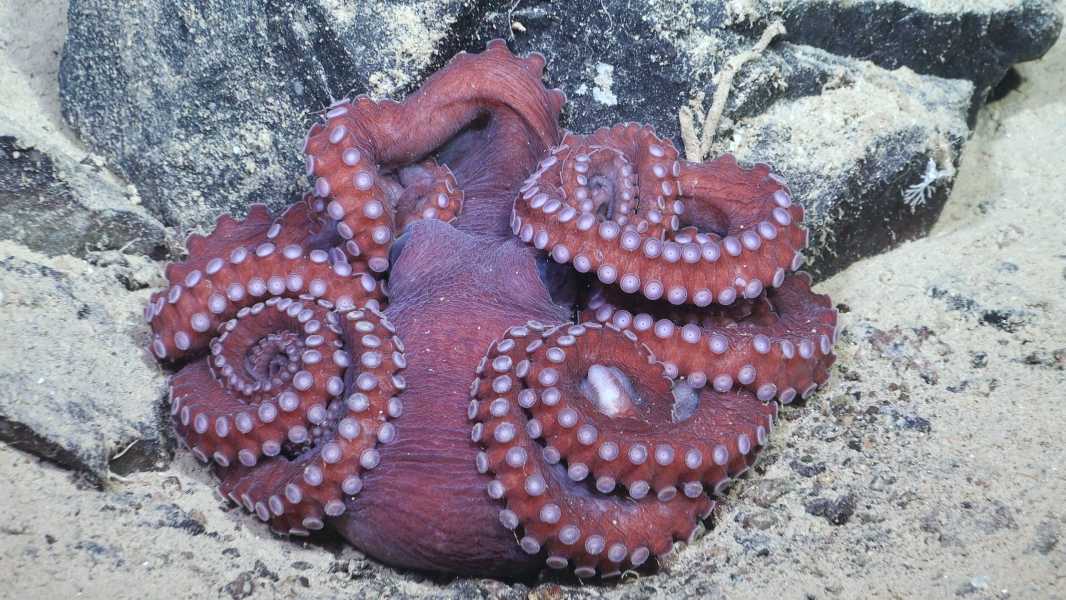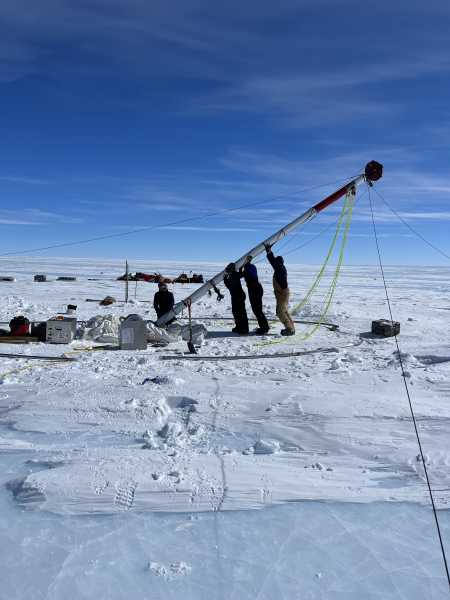
A large sponge and a cluster of anemones are spotted among other life forms beneath the George VI Ice Shelf in the Bellingshausen Sea. (Image credit: ROV SuBastian/Schmidt Ocean Institute)
A massive iceberg that broke away from an Antarctic glacier has revealed a thriving ecosystem within its depths that had never been seen before.
Iceberg A-84, which is comparable in size to Chicago, broke away from the George VI Ice Shelf in Antarctica on January 13, 2025.
With satellite images of the iceberg's movements in mind, researchers aboard the Schmidt Ocean Institute's vessel Falkor raced to the scene. Just 12 days later, they arrived to find a previously unrecorded ecosystem full of giant sponges, fish, giant sea spiders, and octopuses surfacing for the first time.
“We took this opportunity, changed our expedition plan, and went there to investigate what was happening at depth,” said expedition co-leader Patricia Esquette, a marine biologist at the University of Aveiro in Portugal. “We didn’t expect to find such a beautiful, thriving ecosystem. Judging by the size of the animals, the communities we saw had been there for decades, perhaps even hundreds of years.”

The octopus is located on the ocean floor beneath the Bellingshausen Sea off the coast of Antarctica.
What lies beneath Antarctica's roughly 500 feet (150 meters) of ice is largely unknown, but scientists suspect that it contains a vast network of rivers, lakes, and estuaries. However, it was only recently that researchers discovered that this hidden underground world is teeming with life.
Without sunlight and nutrients from above, such life is likely supported by deep ocean currents that flow beneath the shelf's surface, although scientists are unsure whether this is the only mechanism at work.
Sourse: www.livescience.com





